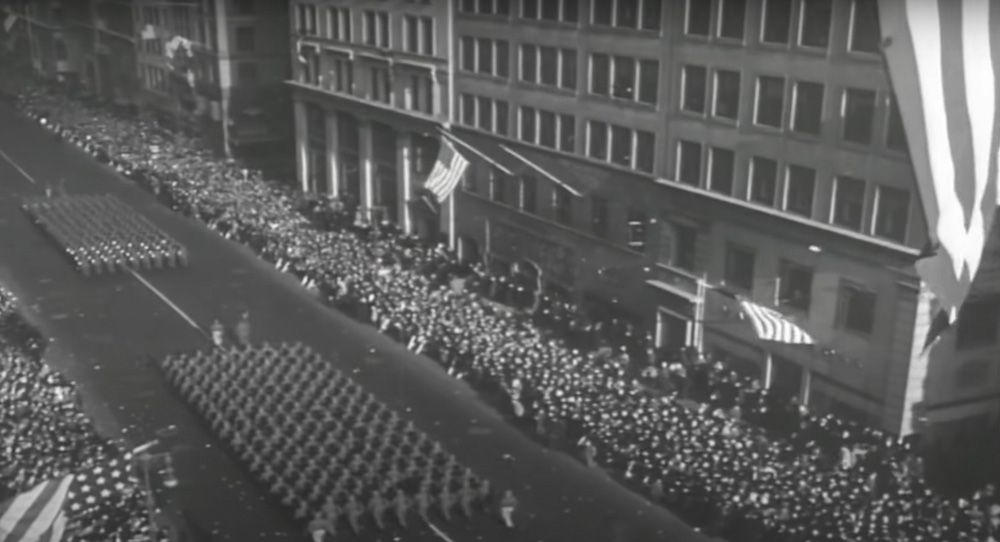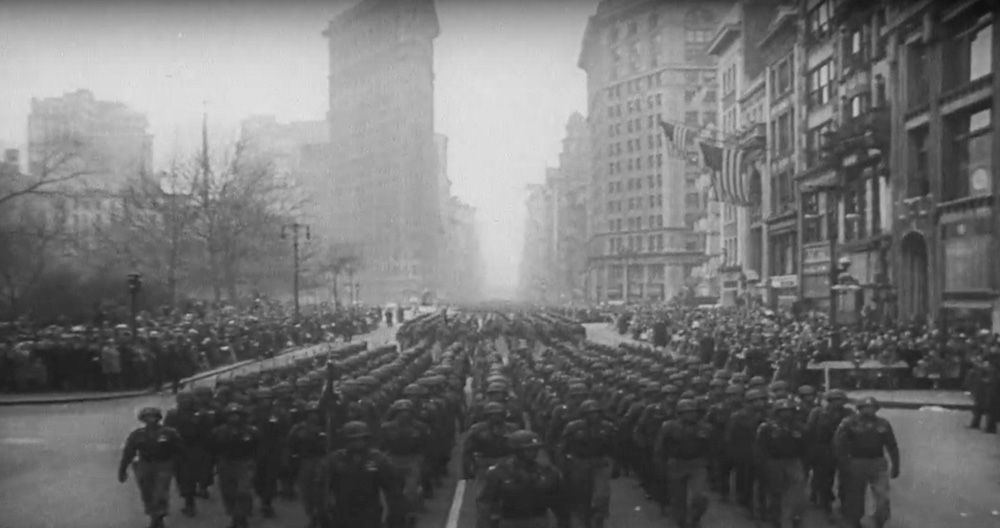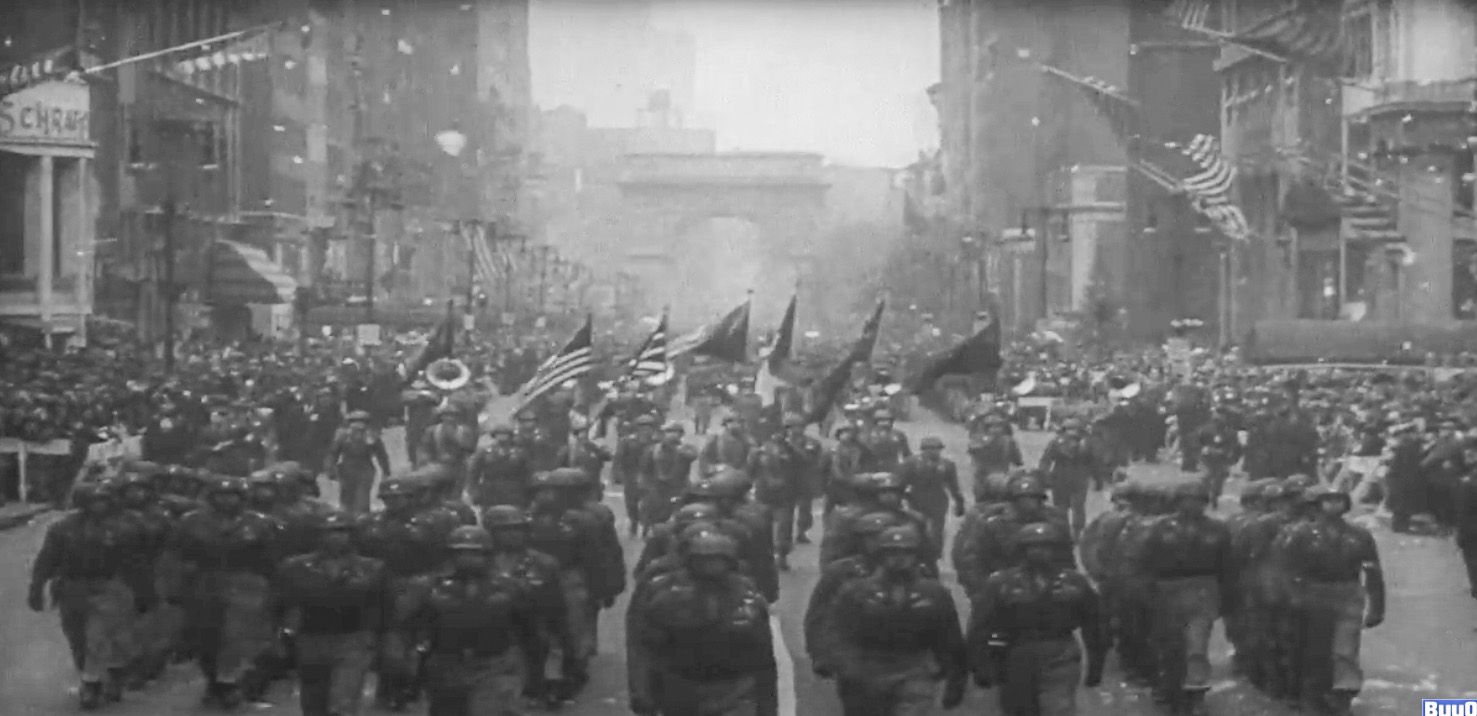Last Chance to Catch NYC's Holiday Notalgia Train
We met the voices of the NYC subway on our nostalgia ride this weekend!


This month marked the 75th Anniversary of the World War II Victory Parade in New York City. On January 12, 1946, troops from the 82nd Airborne Division assembled in Washington Square Park for a four-and-a-half mile march through New York City, the American flag flying triumphantly overhead.
Nazi Germany invaded Poland in 1939, beginning a six-year conflict that would involve more than thirty countries and become the deadliest war in history. The United States officially entered the war after Pearl Harbor was attacked on December 7, 1941. Men as young as 18 years old were drafted into the military to be hastily trained and deployed. Within a year, 36 million men had registered for the draft. The first wave of recruits set foot in Europe as early as January 1942 to begin the fight; by the end of the war, over 400,000 American soldiers had perished.
 Image from archive.org
Image from archive.org
After the end of the war in May 1945, the soldiers of the 82nd Airborne Division had to wait several months before being sent back to the United States. From Berlin, they learned that they had been chosen to be the All American Division, representing the U.S. Army in New York City’s victory celebrations. They practiced three times a day in preparation for the parade. Finally, in late December 1945, they arrived back home for what was called “Operation Homecoming,” their final assignment.
 Image from archive.org
Image from archive.org
On the sunny morning of January 12, the division of 13,000 men marched through the Washington Square Arch and down Fifth Avenue to the cheers of joyous New Yorkers. They were led by 38-year-old Major General James M. Gavin, the youngest division officer in the United States Army. Crowds packed the sidewalk and watched from the windows, balconies, and rooftops of the surrounding buildings. The parade marched past the Flatiron Building and Madison Square Park, continuing to the New York Public Library and the Rockefeller Center, the flags of the U.S., Britain, France, and Russia held at the front.
 Image from archive.org
Image from archive.org
At the New York Public Library, New York Governor Thomas E. Dewey and New York City Mayor William O’Dwyer attended the celebration, as well as former New York City Mayor Fiorello LaGuardia. Cardinal Archbishop Francis Spellman watched the procession from St. Patrick’s Cathedral.
This was the greatest military parade in New York City since the end of World War I, and the city was the location of the largest Victory in Europe Day celebrations in the country. With the end of a long, tragic conflict, the world could finally see a future of peace and rebuilding. However, more than 3,000 of the 82nd Division never made it home to march in the parade, a small portion of the tens of millions of casualties that were caused by World War II. As radio announcer Dwight Weist, who covered the parade, noted solemnly, “These are thirteen thousand, but they stand for ten million. They march for many who will never march again.”
Next, check out why a boat commanded by JFK in World War II was unearthed off Manhattan.
Subscribe to our newsletter